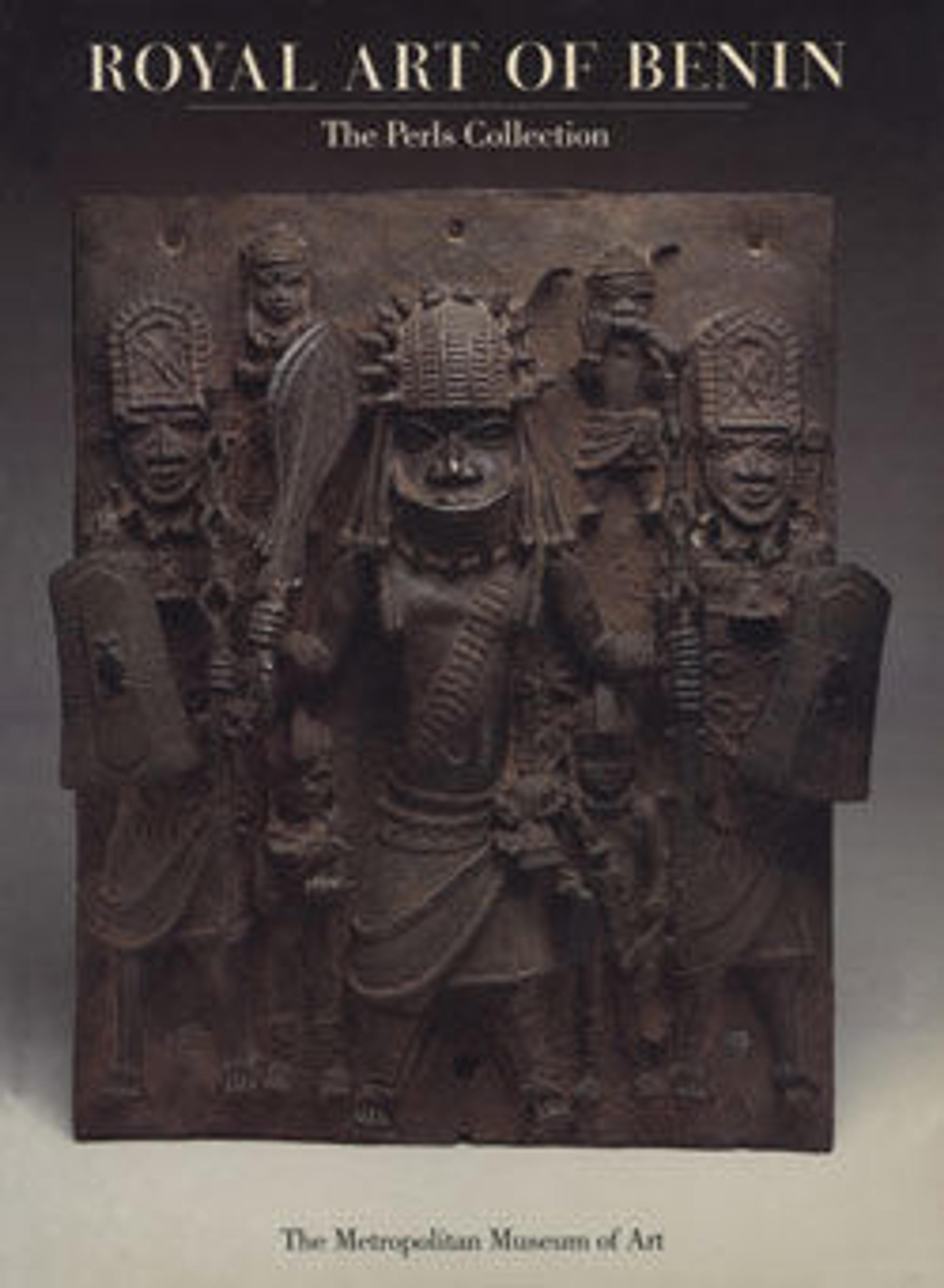Altar Ring
Works in metal in a wealth of bronzes in a variety of styles and types are found throughout the southern half of Nigeria, especially along the lower part of the Niger River. The numerous "Lower Niger bronzes" discovered in Benin at the end of the nineteenth century that were long considered to be of local origin are now thought to come from a number of locations and time periods; some are from the Igbo-Igala area, but most were made in centers influenced by Yoruba and Benin art. Scientific dating of the clay cores in several of these sculptures revealed that a few were made as early as the fourteenth century. Some must, therefore, be contemporary with the naturalistic bronzes of Ife and may be provincial reflections of Ife style.
In the Yoruba center of Ijebu, brass casters drew upon motifs found in Benin and Owo which they translated into distinctly Ijebu configurations of composite animal, bird, and fish forms. The complex regional interrelationships that have historically existed between Benin, Owo, and other Yoruba casting traditions are underscored by a shared tradition of cast-metal altar rings. This example is one of ten enigmatic metal rings that have been unearthed near the sacred city of Ile-Ife. Cast between the fourteenth and seventeenth centuries, they vary widely in style and probably originated in different Yoruba city-states. Their subject matter appears to depict ritualized sacrifice. This example features three decapitated victims, likely criminals or prisoners of war, whose mouths have been gagged to stop their voices. A fourth supine figure, in full chiefly regalia, may be the ruler whose power to take life legitimizes the scene. Above his head a vulture feeds on the remains. The bird has been associated with àwọn ìyá wa (literally, "our mothers"), a Yoruba conception of female power at the threshold between life and death.
In the Yoruba center of Ijebu, brass casters drew upon motifs found in Benin and Owo which they translated into distinctly Ijebu configurations of composite animal, bird, and fish forms. The complex regional interrelationships that have historically existed between Benin, Owo, and other Yoruba casting traditions are underscored by a shared tradition of cast-metal altar rings. This example is one of ten enigmatic metal rings that have been unearthed near the sacred city of Ile-Ife. Cast between the fourteenth and seventeenth centuries, they vary widely in style and probably originated in different Yoruba city-states. Their subject matter appears to depict ritualized sacrifice. This example features three decapitated victims, likely criminals or prisoners of war, whose mouths have been gagged to stop their voices. A fourth supine figure, in full chiefly regalia, may be the ruler whose power to take life legitimizes the scene. Above his head a vulture feeds on the remains. The bird has been associated with àwọn ìyá wa (literally, "our mothers"), a Yoruba conception of female power at the threshold between life and death.
Artwork Details
- Title: Altar Ring
- Artist: Lower Niger Valley caster
- Date: 16th century
- Geography: Nigeria, Lower Niger River region
- Culture: Yoruba peoples, Ife group
- Medium: Copper alloy
- Dimensions: H. 2 1/2 × Diam. 7 in. (6.4 × 17.8 cm)
- Classification: Egyptian Blue-Implements
- Credit Line: Rogers Fund, 1976
- Object Number: 1976.239
- Curatorial Department: The Michael C. Rockefeller Wing
More Artwork
Research Resources
The Met provides unparalleled resources for research and welcomes an international community of students and scholars. The Met's Open Access API is where creators and researchers can connect to the The Met collection. Open Access data and public domain images are available for unrestricted commercial and noncommercial use without permission or fee.
To request images under copyright and other restrictions, please use this Image Request form.
Feedback
We continue to research and examine historical and cultural context for objects in The Met collection. If you have comments or questions about this object record, please contact us using the form below. The Museum looks forward to receiving your comments.
